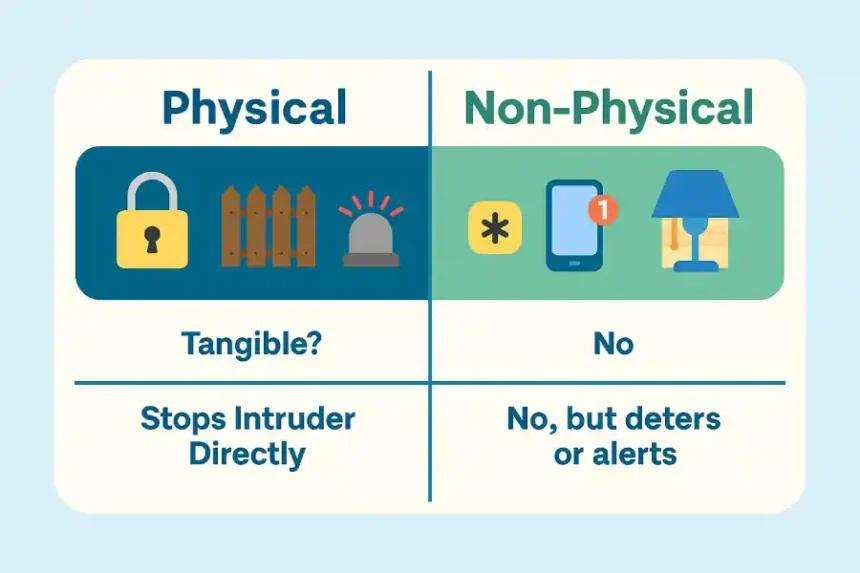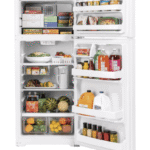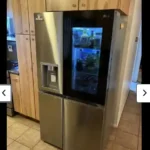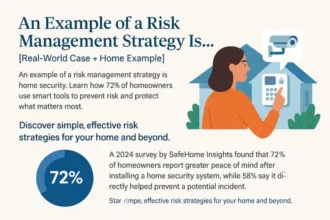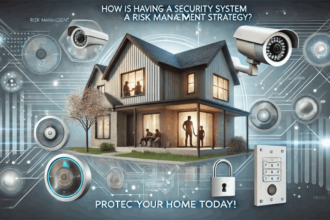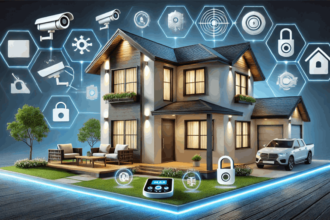Home security is important for protecting your family and property. Most people think of things like locks, cameras, and fences — these are called physical security measures. But home security is more than just physical barriers. So, what is not a physical security measure for your home? It includes things like security apps, strong passwords, and alert systems that don’t physically block access but still keep you safe.
Knowing the difference helps you build a stronger, smarter security plan. In fact, homes with smart tech are 30% less likely to be targeted by intruders, even if they don’t have heavy physical defenses. For more on how these tools fit into a broader protection plan, check out How is Having a Security System for Your Home a Risk Management Strategy?
What Is a Physical Security Measure?
Before we answer what is not a physical security measure for your home, it’s important to understand what is.
Physical security measures are things you can see and touch. They help stop or slow down someone from getting into your home.
Here are some common examples:
- Locks on doors and windows
- Metal bars or grilles
- Fences and gates
- Security cameras
- Lights that turn on when someone moves nearby
- Loud alarms that go off when there’s a break-in
These tools protect your home in a physical way. They don’t use apps or digital alerts — they create real barriers that make it harder for someone to break in.
Want to learn how physical security fits into a full home safety plan? Read What Is a Risk Management Strategy You Could Use to Protect Your Home?
What Is Not a Physical Security Measure for Your Home?
When we think about home security, most people picture things like locks, fences, or security cameras. But not all security tools are physical. So, what is not a physical security measure for your home?
These are tools, habits, or systems that don’t physically block entry, but still help protect your home in powerful ways. They focus more on digital safety, smart technology, and community awareness.
Physical vs. Non-Physical Security Measures
| Type | Examples | Tangible? | Stops Intruder Directly? |
| Physical | Locks, fences, alarms, cameras | Yes | Yes |
| Non-Physical | Passwords, mobile alerts, smart routines | No | No, but deters or alerts you early |
Cybersecurity Measures
These protect your home from digital threats:
- Using strong, unique passwords for each device or account
- Securing your Wi-Fi network with encryption (like WPA3)
- Updating all software and firmware regularly
- Avoiding phishing emails or suspicious links
Remote Monitoring & Alerts
These tools keep you connected to your home — no matter where you are:
- Mobile apps that show live camera feeds or activity logs
- Push notifications for motion, doors opening, or unusual activity
- Cloud storage for security footage, accessible anytime
Smart Home Automation
Automation can trick burglars into thinking you’re home — even when you’re not:
- Lights turning on/off automatically at night
- Smart blinds or curtains opening and closing on a schedule
- Voice assistant routines that activate sounds, lights, or cameras
Community Engagement
Being active in your neighborhood adds a non-physical layer of safety:
- Joining or starting a neighborhood watch program
- Communicating with neighbors about unusual activity
- Sharing local alerts or concerns in community apps
Security Policies & Digital Access Controls
This is especially useful for smart homes, rentals, or shared spaces:
- Limiting access to smart locks with guest codes
- Setting device permissions (who can view cameras or control alarms)
- Reviewing activity logs to track entries and usage
Family Security Awareness
Even simple habits can prevent accidents or intrusions:
- Locking doors, even during the day
- Teaching children not to open the door to strangers
- Avoiding oversharing on social media (like vacation plans)
Routine Property Checks
Some security steps aren’t physical barriers — but help you stay protected:
- Checking that locks, doors, and windows work properly
- Keeping bushes trimmed and property well-lit
- Making sure your home looks lived in, not empty
These non-physical security measures work best when combined with physical tools. They create a layered, modern home defense strategy that’s harder to bypass.
To explore how these digital and behavioral tools fit into full home protection, check out:
Is Buying a Home Security System Protecting Your Home Against Risk?
Common Misconceptions: What Counts and What Doesn’t
Here’s where things get tricky. Many modern home security tools are hybrid devices — meaning they have both physical and digital features. This often causes confusion when answering, “Which is not a physical security measure for your home?”
Examples of Hybrid Devices:
- Smart locks: They physically secure a door, but can be unlocked with an app or voice assistant.
- Smart doorbells: They include a physical camera and button, but use Wi-Fi to send video to your phone.
- Alarm systems: Some have loud sirens (physical) and app-based alerts (digital).
While these devices have physical components, they also rely on non-physical functions like apps, cloud storage, and automation. That’s why it’s important to look at how the device works, not just what it looks like.
How Non-Physical Measures Support Risk Management
Non-physical tools don’t replace strong locks or cameras — but they add a layer of protection that physical systems alone can’t provide.
Why They’re Important:
- They give real-time alerts when you’re not home
- Help prevent cyberattacks on smart devices
- Let you monitor and control your home remotely
- Can deter intruders by making the home look “smart” and active
Together, physical and non-physical tools form a complete security system.
Want a real-life example of this in action? Check out: An Example of a Risk Management Strategy Is…
Why It Matters to Know the Difference
If you only rely on one type of security — physical or digital — you leave gaps in your protection.
Risks of Over-Reliance:
- Only using physical tools? You might miss early warnings or fall victim to digital hacks.
- Only using non-physical tools? You won’t stop someone from physically breaking in.
Knowing the Difference Helps You:
- Plan a stronger defense
- Budget smarter (some non-physical tools are free or low-cost!)
- Have more peace of mind, knowing your home is covered from all angles
Learn how to build a balanced plan step-by-step here: 7 Steps of Risk Management Process With Example
FAQ: Non-Physical Security Measures for Your Home
Which is not a physical security measure for your home?
Anything that doesn’t create a physical barrier. This includes mobile alerts, cybersecurity tools (like strong passwords and Wi-Fi protection), smart home automation, and neighborhood watch programs.
What are examples of non-physical home security?
- Password-protected Wi-Fi
- Security camera apps
- Smart lighting automation
- Remote locking/unlocking via smartphone
- Family safety routines
- Neighborhood communication channels
Is a smart lock a physical or non-physical measure?
It’s both. A smart lock has a physical component (the lock itself), but also uses non-physical features like apps and Bluetooth to control access.
Why should I use non-physical measures if I already have locks?
Physical tools can delay a break-in, but non-physical measures can help prevent one before it happens — by alerting you early, deterring threats, or catching suspicious activity while you’re away.
How do I balance physical and non-physical security?
Use physical tools (like locks and cameras) for direct protection, and non-physical tools (like alerts, smart lighting, and cybersecurity) to stay informed and prevent weaknesses. Combining both gives you a complete home security system.
Conclusion: Build a Smarter, Safer Home
Home security is more than just strong locks and tall fences. While physical security measures are your first line of defense, non-physical tools like smart apps, cybersecurity, and community awareness offer powerful protection — often in ways you can’t see.
By understanding what is not a physical security measure for your home, you’re better equipped to build a well-rounded risk management strategy. The best security plan uses both physical and non-physical measures to keep your home safe, your family secure, and your peace of mind intact.
Protect Your Home, Inside and Out
At Home Revista, we help homeowners build smarter, safer living spaces. From expert tips on home security to trusted tools and service providers, we’ve got you covered.
Whether you’re upgrading locks or choosing a smart system, explore solutions that fit your lifestyle. Get started at www.homerevista.com.

